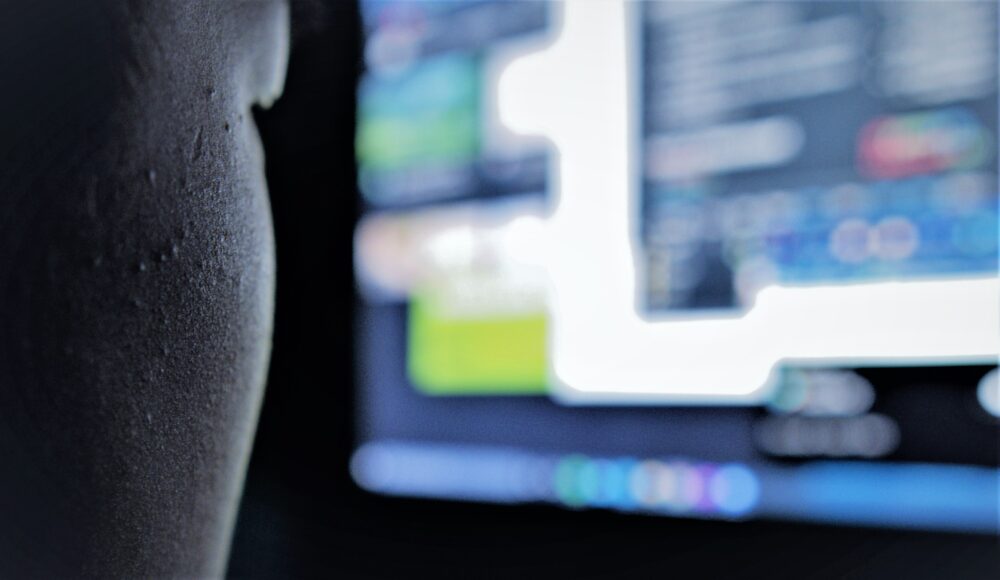
By Cate Meister
As distance learning continues, students face a crucial question: will they choose to leave their cameras on in live meetings?
At first, it seems that using the video function of online meeting platforms is the more obvious choice. However, by now students have quickly learned that there are setbacks to having their cameras on and not everyone may feel the same way about camera use.
Here are some positives reasons to keeping your camera on during class:
It helps build a sense of community within the “classroom.”
In a school where the average grade-level size is 900 students, you often will not know the majority of your classmates at the beginning of the year. Students usually get to know their classmates as the year progresses by interacting with each other in class. With distance learning, however, building a sense of community within the class is difficult, especially when students see a grid of blank squares instead of the faces of their classmates.
“I really miss the relationships with the students,” math teacher Jane Springer said. “I think the more students [who] can leave their cameras on, the better, as it helps form those relationships. It’s hard to form a relationship with a black screen.”
When other people can see what you are doing in class, it forces you to focus.
Having their cameras on compels students to reflect on the image that they are presenting. Chances are, students will want to present the best version of themselves.
While this could mean brushing their hair and getting out of bed for many students, it could also mean putting their phones away, actively note-taking, following teachers’ instructions and minimizing their distractions because they know that other people can see them.
“I feel [keeping my camera on] just gives me some sort of accountability when I’m in class, that way I’m not on my phone or distracted,” junior Jovana Hester said.
It sends a message that you are engaged in class.
With your camera on, teachers can see exactly what you are doing in class. If you aren’t paying attention, this could be problematic. However, if you are paying attention, teachers will know and you’ve got nothing to worry about.
It’s also easier to respond to teachers with a quick nod is than typing into the chat or unmuting. You’ll also stand out in classes where most students do not have their camera on.
Camera use allows teachers to better gauge the needs of their classes.
Much of our communication is done through body gestures and facial expressions. Teachers rely on physical reactions to get a sense of how students feel about their class.
For example, a classroom of students slumped in their chairs with expressionless faces might prompt a teacher to make their lesson more exciting.
And even when students might be agreeing that, they think this is an appropriate amount of homework, their facial expressions may say otherwise. When a teacher cannot see their students’ faces, a valuable source of communication and feedback is lost.
On the other hand, students may experience some unpleasant effects when they keep their video on during class:
It can be intimidating when no one else is showing their face.
Although it may sound trivial, highschoolers are much more likely to do something when they know that their peers are too. Being the only student with their face displayed on a video conference can feel uncomfortable. This unintentional form of peer pressure is subtle but maintains influence over high schoolers.
“If the majority of students have their video on, I turn mine on as well,” Haroun said. “In classes where teachers don’t ask students to turn their cameras on, [almost] all students, including [me], keep their videos off.”
Participation might be uncomfortable when students are being watched.
There is an undeniable self-consciousness that comes along with keeping your camera on. Many students may find that for them, the chat function of different video conference platforms is a good alternative to turning their camera on, unmuting and speaking in front of the class. The chat also provides a good tool for students who usually wouldn’t participate in person because they feel uncomfortable speaking in front of others.
Camera use is impacted by varying living situations and distractions.
A student with only one other person in their home is going to have a much different learning environment compared to a student with five other people in their home. Students with hectic households might feel like they are disrupting others when they have their cameras on.
“There are reasons at times students might not want their cameras on. Maybe it’s something going on in the background with family they don’t want everyone to see, maybe they didn’t get to clean their room or woke up late,” Springer said.
Furthermore, students who have parents, siblings or other relatives all working from the same place may have less internet capacity and bandwidth.
“If it does get to a point where I have to constantly keep turning [my camera] on because of connectivity, I’m just not going to turn it on,” Hester said.
Regardless of camera preferences, it is clear that online learning poses new challenges for both students and teachers. Everyone has been forced to adapt to the unique demands of virtual schooling. Mutual communication and understanding between students and teachers will remain vital for successful distance learning.





